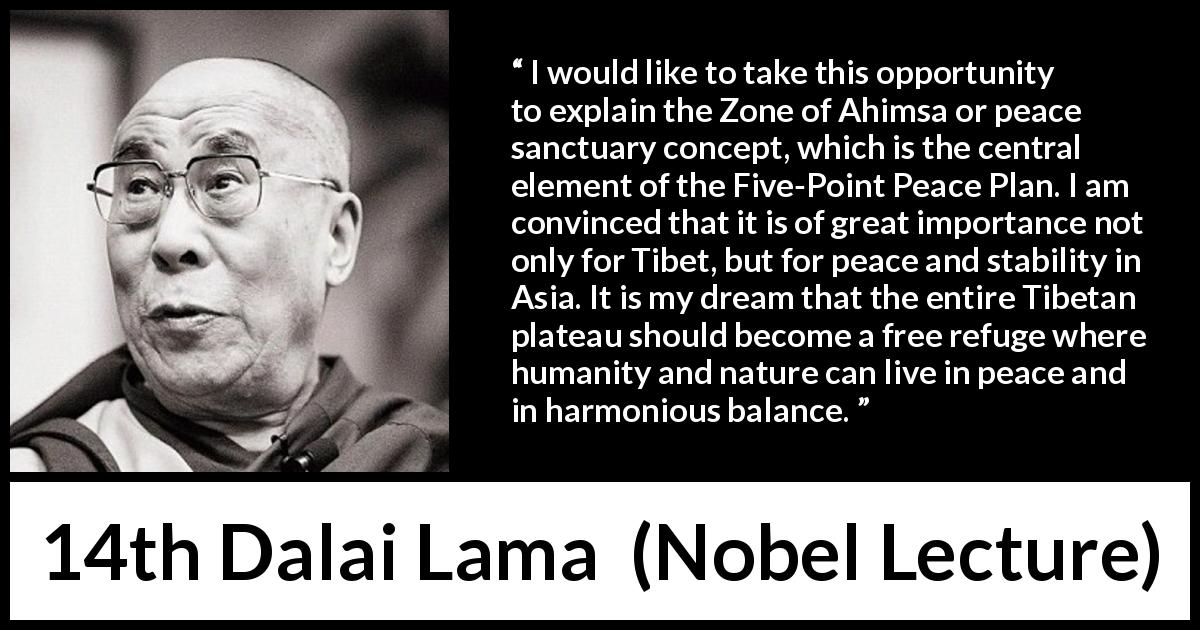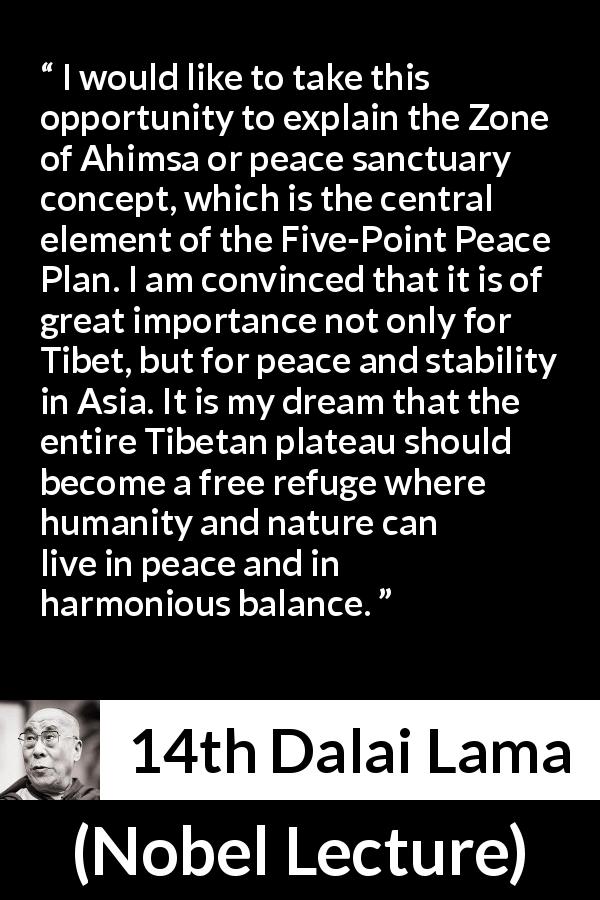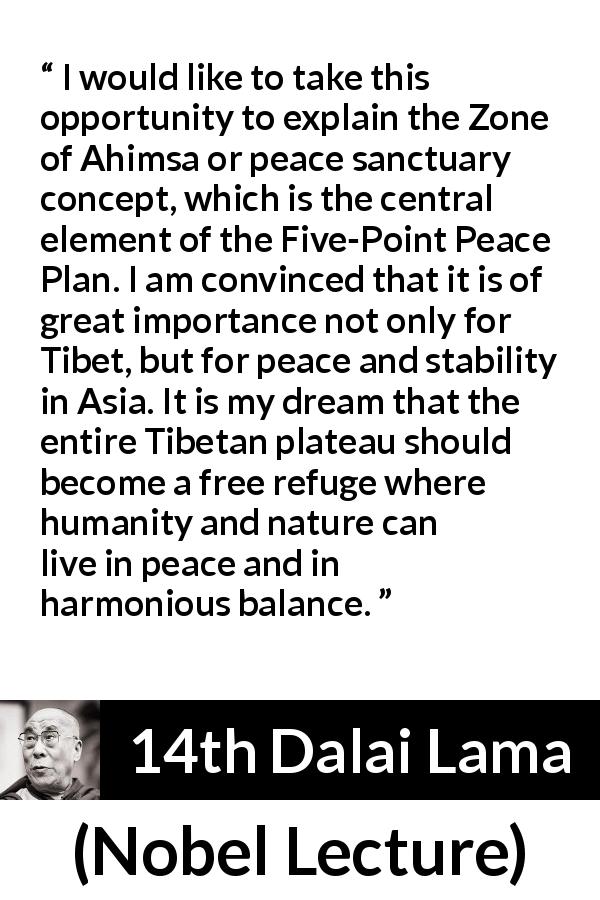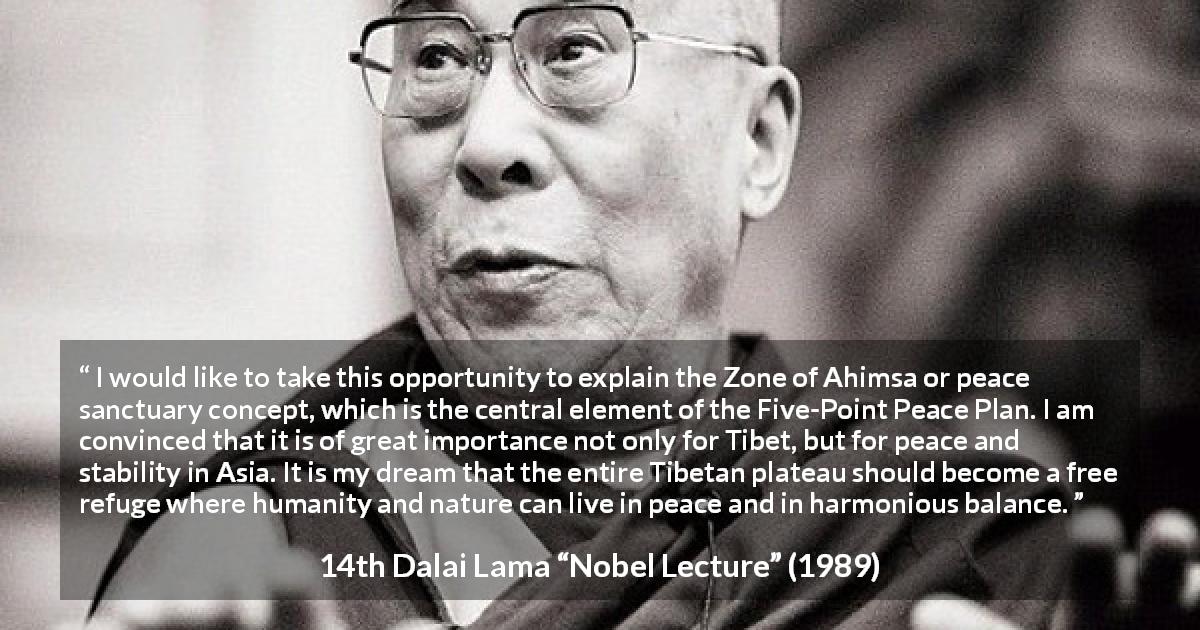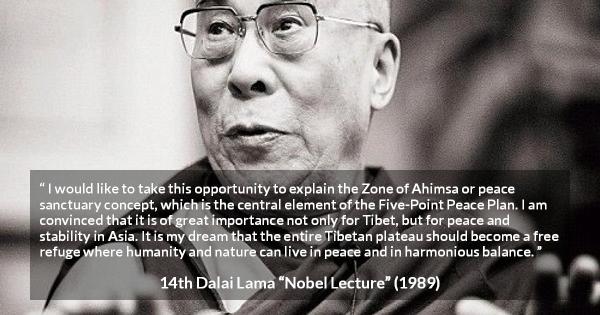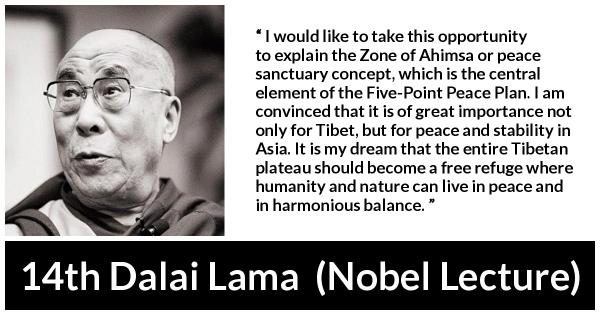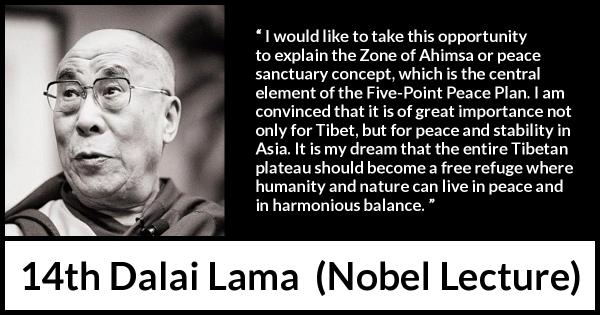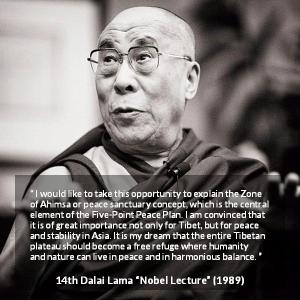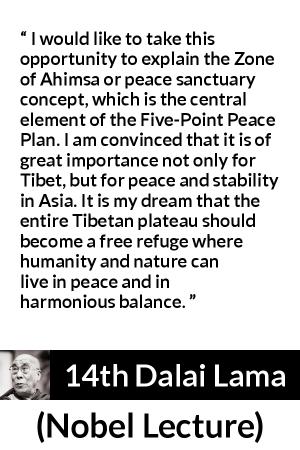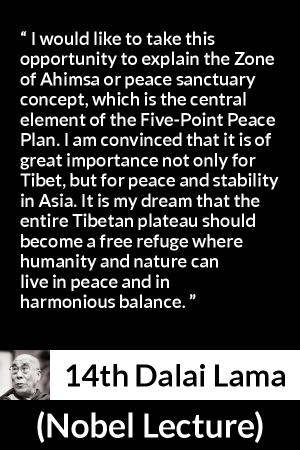“ I would like to take this opportunity to explain the Zone of Ahimsa or peace sanctuary concept, which is the central element of the Five-Point Peace Plan. I am convinced that it is of great importance not only for Tibet, but for peace and stability in Asia. It is my dream that the entire Tibetan plateau should become a free refuge where humanity and nature can live in peace and in harmonious balance. ”
14th Dalai Lama, Nobel Lecture (1989). copy citation
| Author | 14th Dalai Lama |
|---|---|
| Source | Nobel Lecture |
| Topic | humanity peace refuge |
| Date | 1989 |
| Language | English |
| Reference | |
| Note | |
| Weblink | http://www.nobelprize.org/nobel_prizes/peace/laureates/1989/lama-lecture... |
Context
“It calls for (1) Transformation of the whole of Tibet, including the eastern provinces of Kham and Amdo, into a zone of Ahimsa (nonviolence); (2) Abandonment of China's population transfer policy; (3) Respect for the Tibetan people's fundamental rights and democratic freedoms; (4) Restoration and protection of Tibet's natural environment; and (5) Commencement of earnest negotiations on the future status of Tibet and of relations between the Tibetan and Chinese people. In the Strasbourg address I proposed that Tibet become a fully self-governing democratic political entity.
I would like to take this opportunity to explain the Zone of Ahimsa or peace sanctuary concept, which is the central element of the Five-Point Peace Plan. I am convinced that it is of great importance not only for Tibet, but for peace and stability in Asia.
It is my dream that the entire Tibetan plateau should become a free refuge where humanity and nature can live in peace and in harmonious balance. It would be a place where people from all over the world could come to seek the true meaning of peace within themselves, away from the tensions and pressures of much of the rest of the world.” source
I would like to take this opportunity to explain the Zone of Ahimsa or peace sanctuary concept, which is the central element of the Five-Point Peace Plan. I am convinced that it is of great importance not only for Tibet, but for peace and stability in Asia.
It is my dream that the entire Tibetan plateau should become a free refuge where humanity and nature can live in peace and in harmonious balance. It would be a place where people from all over the world could come to seek the true meaning of peace within themselves, away from the tensions and pressures of much of the rest of the world.” source










